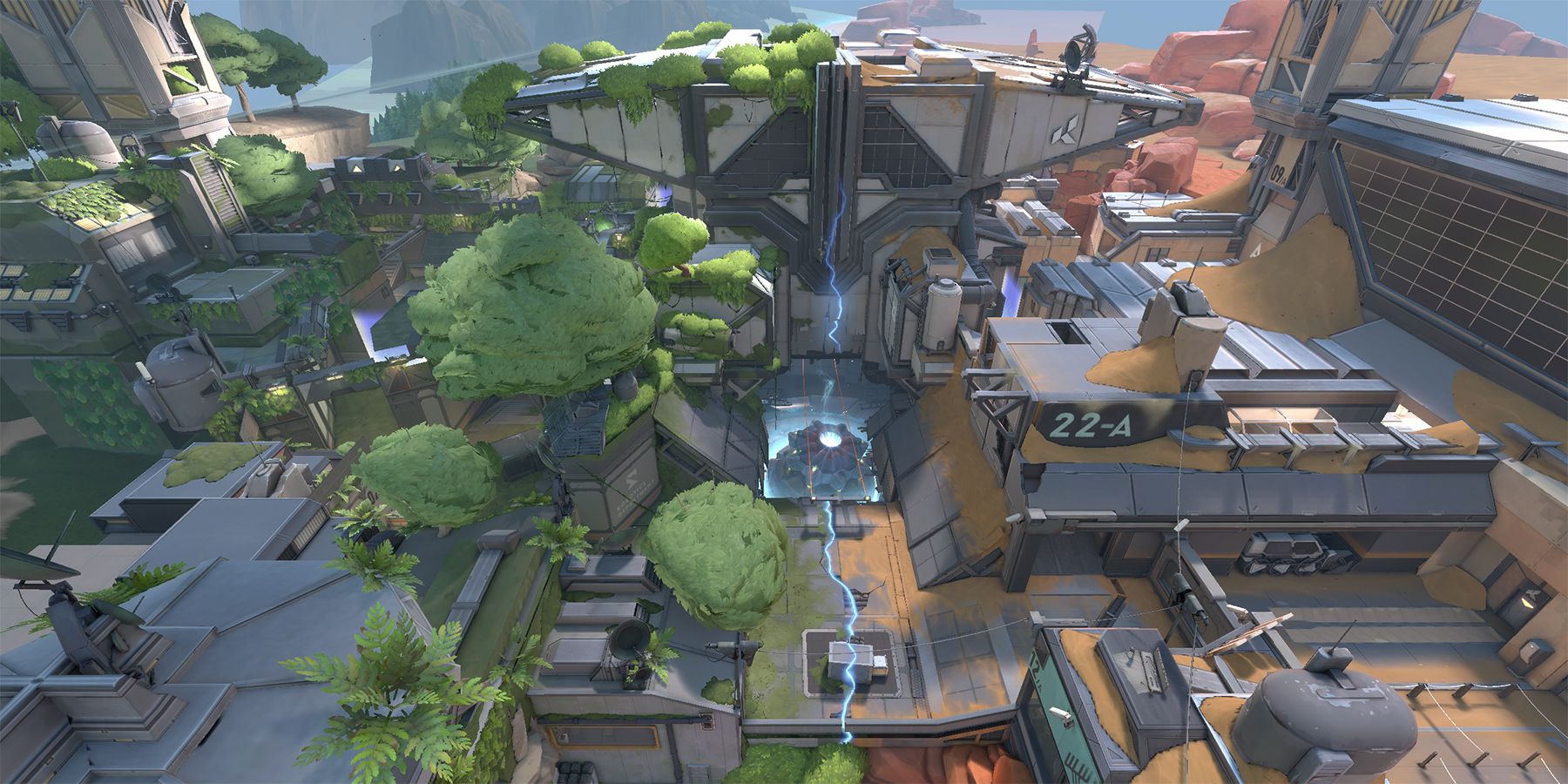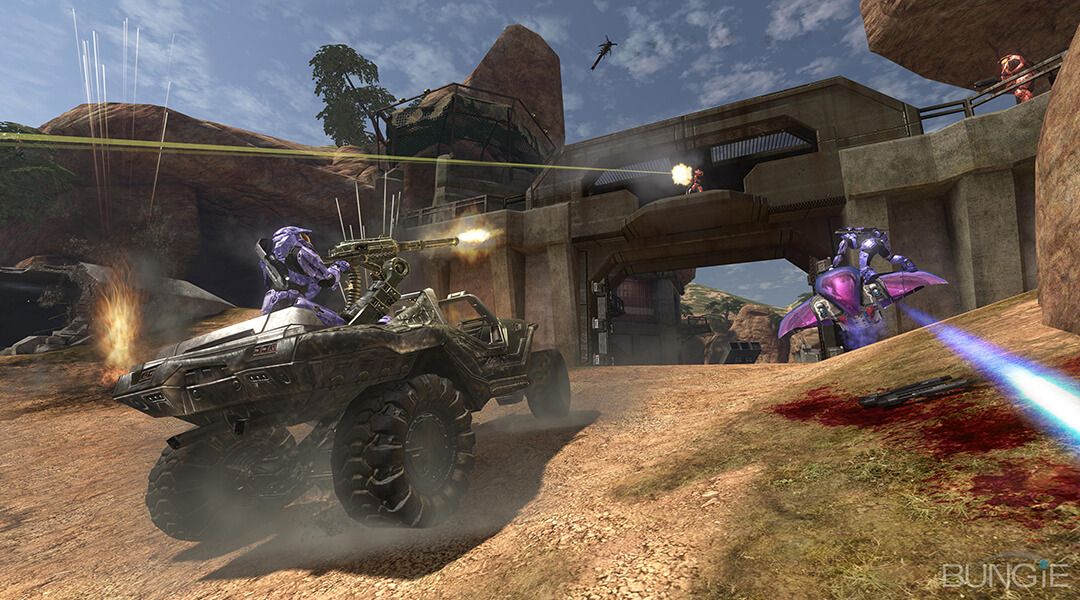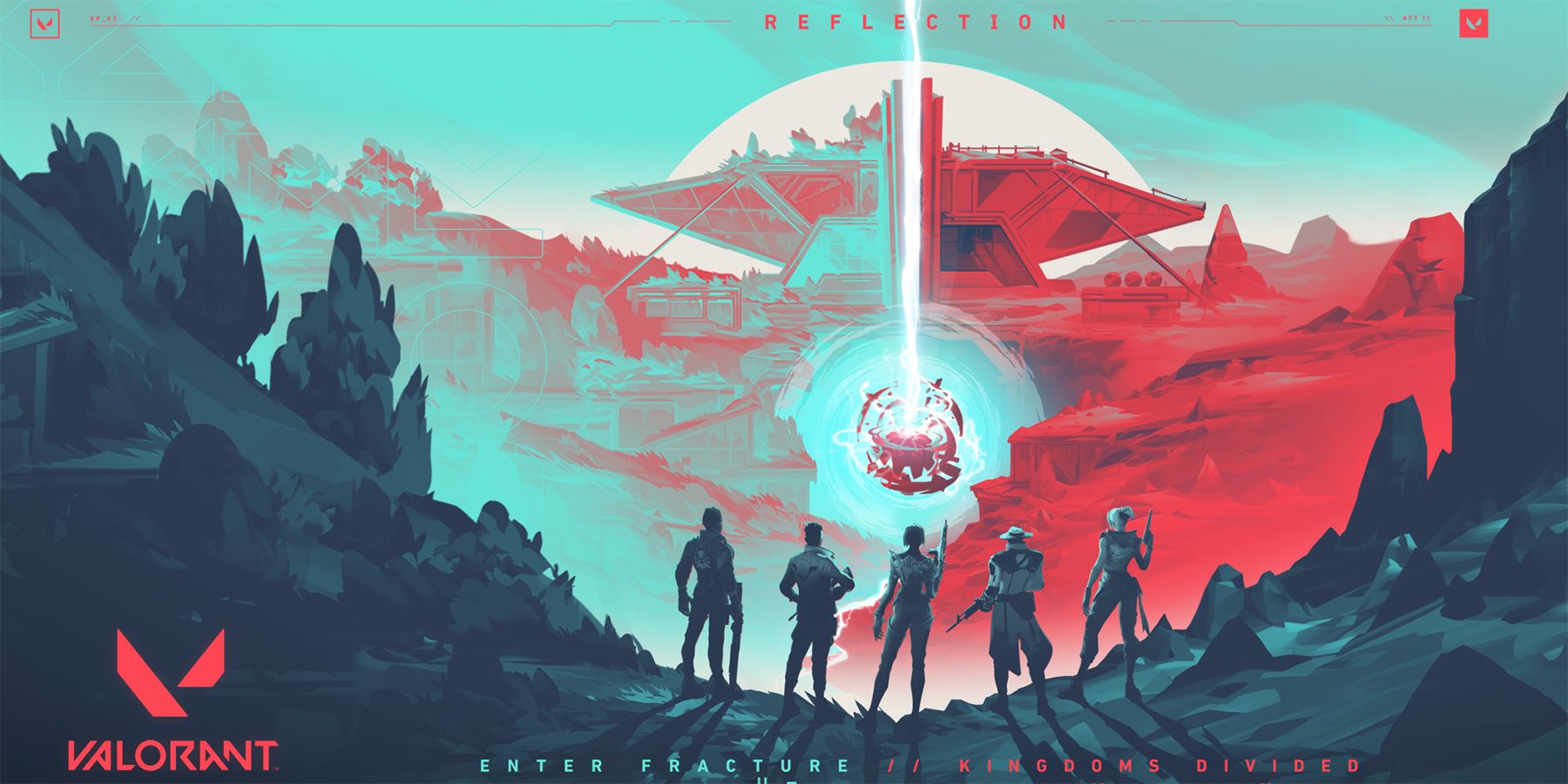With VCT Masters Berlin underway, the next big Valorant tournament will showcase how the competitive meta has evolved and changed in the current version of the game. The beginning of the game's latest Episode began back in June, bringing with it a new agent in Act 1 alongside huge economy and ability changes. Moving into Act 2, many were expecting the long-teased new agent and rumored new map would be coming to the game, alongside any possible changes to the competitive balance of the game. However, instead of the next new agent to succeed the introduction of KAY/O last act, Valorant receives its next new map: Fracture.
Fracture finds itself in a very strange place; recent maps added to the game have largely been unconventional, but still maintained ties to the Counter-Strike-adjacent design language. Fracture, unlike Icebox and more recenlty Breeze, is far different than any other Valorant map to date because of its distinctive design and format. Every new map added to the game has pushed the boundary of Valorant's map structure to a formative degree, but Fracture is the first time the game seemingly borrows inspiration from comparatively unconventional shooters. If anything, Fracture's design is most akin to a map players might find in a Halo game, at least to some degree.
RELATED: Riot Aims for 30 Valorant Agents Before Adding Ban System
Fracture's Unconventional Design in Valorant

Valorant is a game who's popularity stems from the very concept of being unconventional but familiar. Every player, rightfully so, compares Valorant to Counter-Strike: Global Offensive, at least in terms of gunplay alone. The balance between different rifles (Phantom/Vandal), sidearms (Classic/Ghost/Sheriff/etc.), snipers (Operator/Marshall), and more are reminiscent of the balance Counter-Strike has struck after years of refinement. However, the addition of agents and their signature abilities makes it a vastly different game, even when firefights would be very familiar to Counter-Strike fans. Valorant is it's own game, but the influence is clearly there.
Fracture's design represents that identity wholeheartedly, moreso than any other unconventional map (Icebox, Breeze) has done before in Valorant. Attackers spawn on the outer perimeter of bomb sites, utilizing quick zip lines to push from the north or south flanks on A or B sites. Defenders spawn in the middle of the map, with direct access to both bomb sites, east and west. While previous maps in Valorant have often rewarded split-pushing and delegation of teams on opposite sites depending on the strategy, Fracture actively encourages teams splitting up. This degree of freedom and unconvetional attacking routes is not unlike some of the best Halo maps ever made.
Fracture Is Reminiscent of Halo's Multiplayer Map Design

Nearly every mode in Halo multiplayer has always encouraged playstyle complexity and player freedom through map design, as well as the weapon placement throughout each map. Of course Valorant only dishes out weapons from the buy phase, but objective-based modes in Halo were often dynamic experiences based on map knowledge, player rotation and taking space, all in service to picking up power weapons to dish out damage to the enemy team. Halo in particular has emphasized this complexity from a two-fold approach: the subtle pre-designed maps available in the game already, as well as player-created arenas designed in Forge World.
From Bungie's point of view, Halo maps were intentionally designed with the level of diversity and variety that's adaptable to all modes. As a result, a variety of strategies could be implemented, regardless of whether players are queueing into Slayer, Capture the Flag, VIP, or even Infection. While there are many excellent Halo map examples (Blood Gulch, Ascension, Last Resort, etc.), a prime example of an adaptable map design that's been a fan favorite is Halo 3's High Ground.
It's titular asymmetrical design would at first sight seem unfair to the team spawning on the lower beach. However, the many small cracks and vulnerabilities strategically placed throughout the beach side team's approach mean any game made each High Ground match unpredictable. Attackers could push left through the trees to try and enter the northern base through bunker, or they can push right through caves straight up to the High Ground gate and open up the front door for attackers. On the flip side, defenders have more cover, a turret on the front gate to lay down serious firepower, as well as the literal higher ground sniper position to cover the attacker's approach.
Both teams playing on Halo 3's High Ground are arguably given the same degree of flexibility that makes the map surprisingly balanced, despite the presumed advantage that defenders would have. That's the exact same design concepts factoring into Fracture's design in Valorant, despite it being a completely different shooter.
RELATED: Why Games Like Halo Infinite May Be Veering Away From Battle Royale Modes
Valorant Borrowing From Halo-Esque Design Is Intriguing

Now, Fracture isn't exactly Valorant's version of High Ground, but it does certainly emulate some of the design philosophy that made up one of Halo 3's best maps. Riot Games has consistently worked to flex the conventional design of multiplayer maps in a largely objective-based shooter, and Fracture is certainly no different. Some Valorant fans were quick to notice (or even complain) that Breeze was much larger than the typical Valorant map, often being compared to CS maps like Cobblestone. However, Fracture is a very different beast; it's not necessarily bigger in the sense of longer sight lines, but its gameplan and strategy is very unique.
Fracture is, to an extent, far more labyrinthian in layout compared to conventional Valorant (and arguably even some Counter-Strike maps), something Halo maps have also excelled at crafting. Clearing corners in Fracture's A-side Hall and Door, or taking space from B Main on the other side of the map, can be difficult to execute on attacker side. Defenders are encouraged to split and cover as much ground as possible, since rotating across the map is both dangerous and time-consuming for defenders, but stacking sites and/or playing retake is a far greater gamble.
At the moment, Valorant has not implemented Fracture into any unrated or competitive queues yet, especially since there's already some minor changes coming to Fracture's design. That being said, Fracture offers a very unique experience to Valorant's meta currently, and could certainly be a flex map for teams that study Fracture well. The map's complex but adaptable design could allow for plenty of strategy and counterplay that's not really present on any of Valorant's existing maps currently in rotation.
Valorant is available now on PC.

